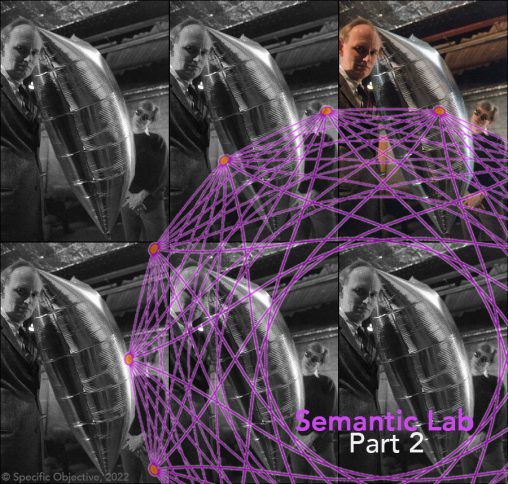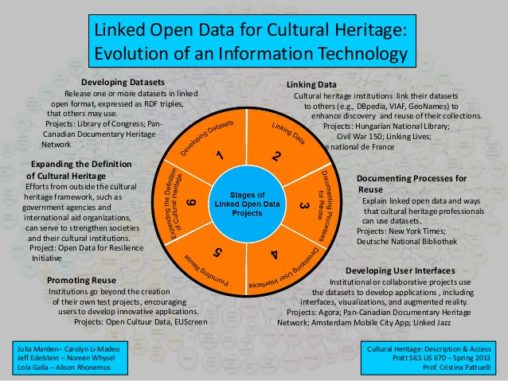Tag: linked open data
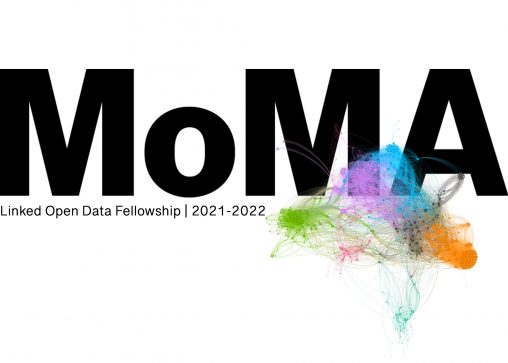
In congruence with the ongoing efforts of MoMA to make its exhibition history available online, the work completed through my MoMA Linked Open Data Fellowship built upon work of previous fellows to model art exhibition event concepts through Wikidata, an open knowledge base, enabling a further reach and connectivity of the institution’s archive and collection data.
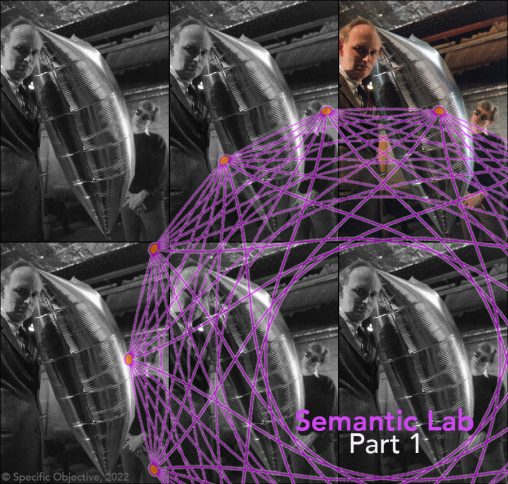
The Semantic Lab has developed several innovative tools to facilitate digital arts and humanities research using linked open data principles and technologies. We will provide an overview of these tools and their applications by featuring use cases from the E.A.T.+LOD Project which focuses on archival documents from the Experiments in Art and Technology (E.A.T.) collection of the Robert Rauschenberg Foundation.
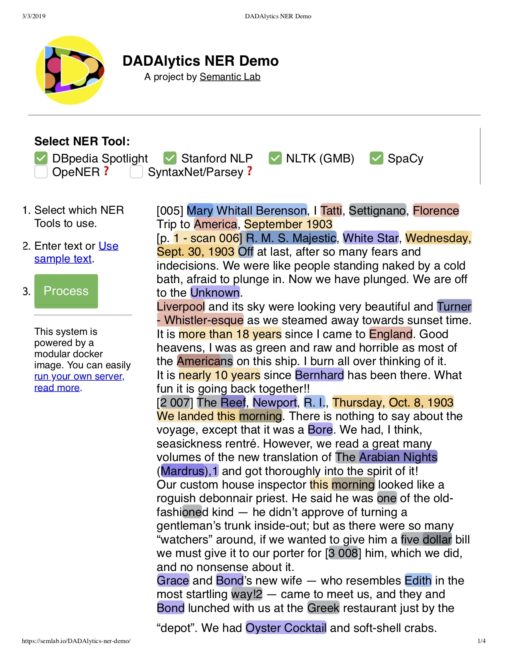
Our presentation will be about the development of DADAlytics, a semantic tool recently created by the Semantic Lab at Pratt (semlab.io) to help librarians, archivists and humanities scholars generate linked data from textual resources and descriptive records. We will discuss opportunities and challenges of adopting linked open data technologies and discuss the development of DADAlytics. The use of DADAlytics will be contextualized within a real-world scenario provided by the collection of personal diaries of Mary Berenson, part of the Bernard and Mary Berenson Papers (1880-2002) held at the Berenson Library at the Villa I Tatti in Florence (itatti.harvard.edu/berenson-library – see The Mary Berenson Project for additional context).
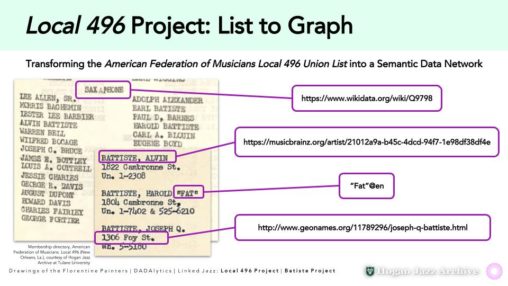
The Local 496 Project transforms the American Federation of Music’s Local 496 union list into a semantic data network. This document is a 1940’s directory of the segregated African-American chapter of New Orleans jazz musicians. This project will highlight the Batiste family network, many of whom are listed in the directory.
This presentation provides an technical overview of initiating Linked Open Data (LOD) in the Whitney Museum of American Art as part of the 2017-2018 LOD for Museums Fellowship.
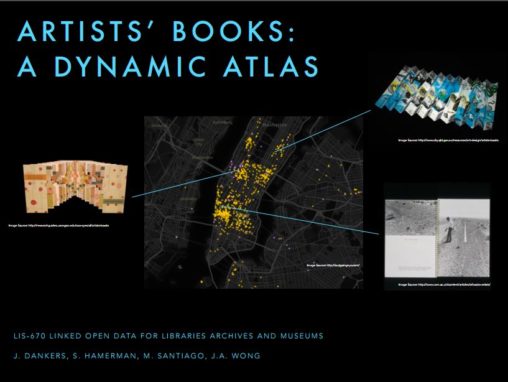
The project is a mock IMLS Grant Proposal for “Artists’ Books: A Dynamic Atlas.” This pilot project will use linked open data to create a dynamic mapping interface that indicates the home libraries of artists’ books located within New York. Led by the MoMA Library in partnership with the Frick Collection, Brooklyn Museum, Whitney Museum, and Metropolitan Museum, the dynamic atlas will deepen engagement with these unique collections; allow users to visualize connections between artists, books, and institutions; and make project data available for use on the open web.
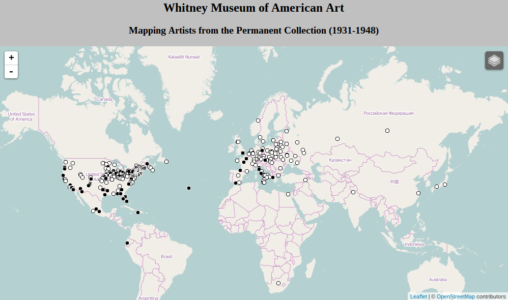
This project reports the results of the first nine months of developing linked open data with a small selection of the Whitney’s collection, focusing on the artist and works added to the collection during the founding years (1931-1948) under its first director Juliana Force. It serves as a case study for other institutions interested in developing linked open data projects. This project also demonstrates several practical examples of how linked open data can be used for research and public outreach.
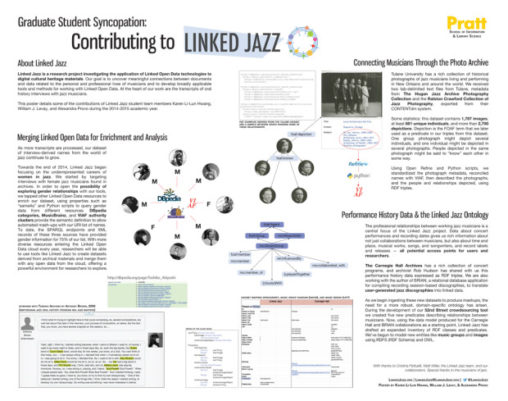
This poster highlights our research as student members of the Linked Jazz project, an ongoing exploration in applying Linked Open Data (LOD) technologies to cultural heritage materials. Research directions include the use of LOD for dataset enrichment in digital humanities research; creating RDF triples to describe image resource types; and mapping elements from various music and jazz databases to assign entities and properties from ontologies.
The selection of authors in the network is made up of fiction and poetry writers of various subdivisions. The Network of Literary Authors is derived from curated SPARQL queries for ‘influenced/influenced by’ DBpedia properties and shows color groupings representing only 19 communities based on influence connections between nearly 1000 authors.
Using exploratory methods of Linked and Open Data, “Perspectives of Origin: A Geographic Encounter” project seeks to display specific geographic origin information of cultural heritage objects from the collection of the Metropolitan Museum of Art.
